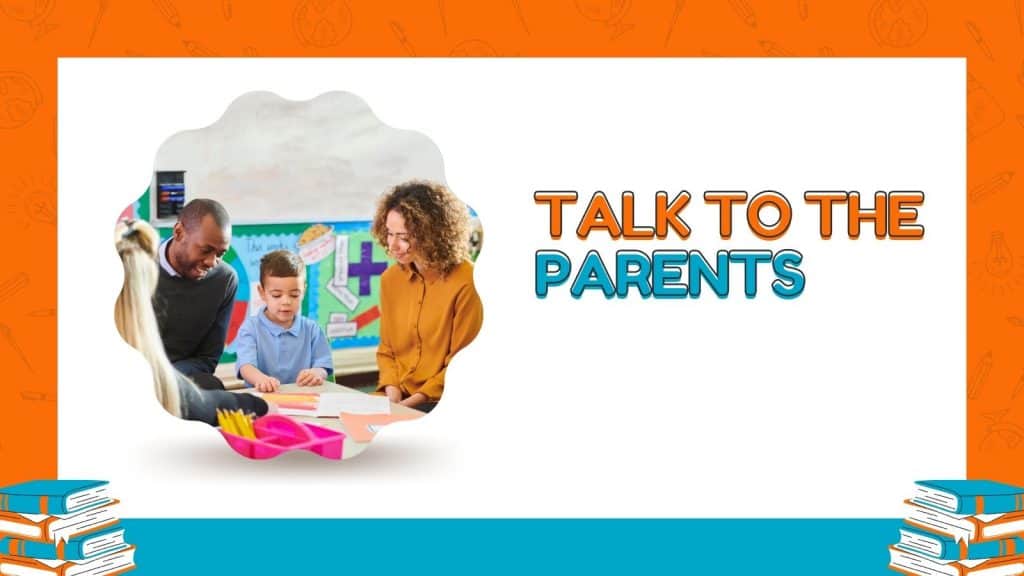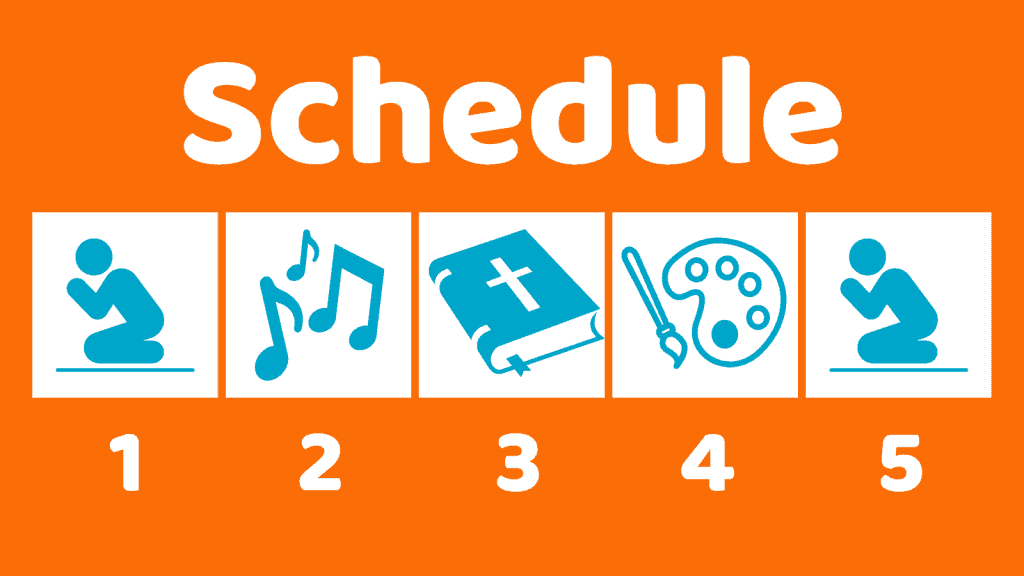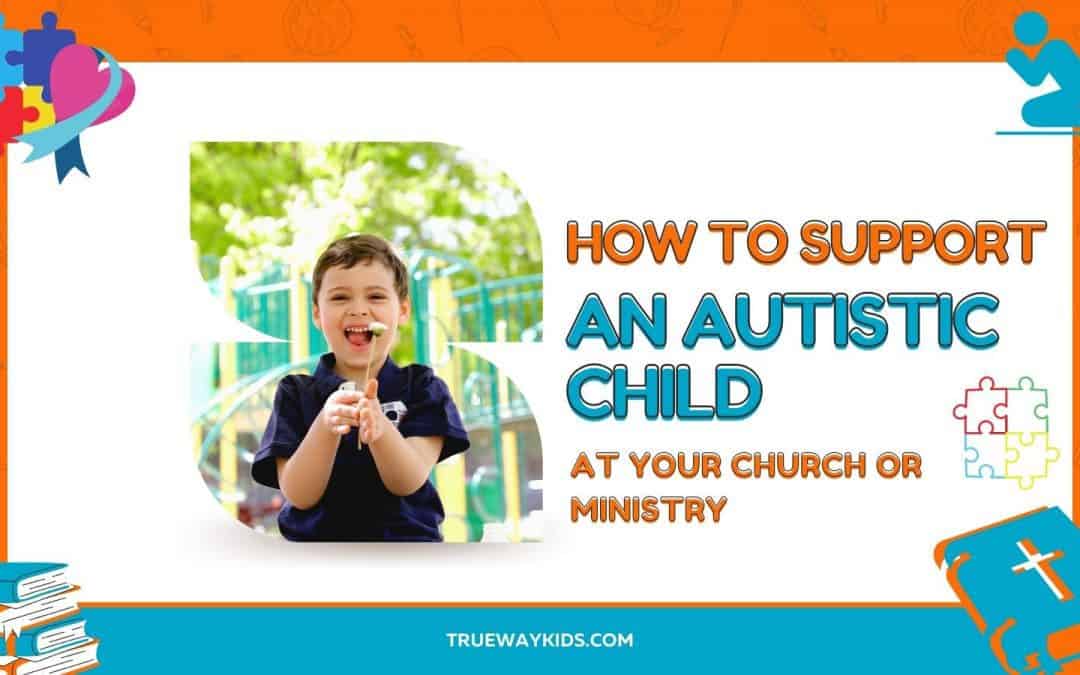How to support an Autistic Child at your church or ministry
Our children’s ministries must become welcoming places for all children. Our class should be a place where all children can encounter God and learn from the Bible.
Autistic children might be some the most misunderstood children in society.
- Maybe you’ve recently had an autistic child attend your group and don’t know what to expect or how to support them.
- Maybe a parent has asked if their autistic child would be welcome in your class.
- Maybe your pastor has told you an autistic child will be joining your group, and you feel overwhelmed.
This article aims to be a quick reference guide of what autism is, how to identify an autistic child, and how the teacher can support an autistic child in a regular church setting. At the end of the article, there are links to expert advice that can help you further.
Before you read any further

While we hope this guide will be helpful, the number one takeaway lesson is this: Talk to the child’s parents.
Every child is unique and wonderfully made in their own specail way. Parents are the ones who will best understand their child, their needs, and how to support them. While some basic understanding might help guide the conversation, parents will be thankful that you care and have taken the time to research how to care for their child and speak to them directly.
What exactly is autism?
Autism, scientifically referred to as Autism spectrum disorder, is a collective term used to refer to a group of developmental disabilities. Autism is a disorder characterized by a spectrum of disabilities. The disability is caused by uniqueness in brain structure —the brain of an autistic child is slightly different from that of a neurotypical child. Autism commonly affects the nature in which a child interacts, speaks, or thinks.
What are the characteristics of an Autistic Child?
There’s no single characteristic that marks an autistic child. In fact, the traits often vary from one autistic child to the other—hence the term Autism Spectrum. However, specific characteristics are noticeable among the vast majority of Autistic children.
The American Psychiatric Association defines an autistic child as an individual who has a range of symptoms characterized by challenges in social skills, repetitive behavior, and restricted interests.
Some children may demonstrate these characteristics at a higher level of intensity than others. The severity of these symptoms can change over time and vary from child to child.
It is important to understand that every child is different. There’s no one set way an autistic child will behave or one set way they will think, act or feel throughout their life.
Some common traits include:
Fascination with objects

A good deal of Autistic children often have an intrinsic connection with one particular object. These objects could be colors, clothes, stories, or anything. But they are passionately drawn to one specific thing. For example, try to picture an autistic child who is fascinated with trains; The child will do anything to capture the moment when the train passes. Similarly, an autistic child may love one particular story in a book and may choose to read it continuously at the expense of others. For example, some scholars have thought that Albert Einstein showed signs of autism, such as how he was fascinated by light beams, which subsequently drove him to pursue concepts related to light. This fascination may last for months or even their entire life!
Difficulty with changed routine
The majority of Autistic children will often find it challenging to abide by uncommon routines or schedules. For example, the child may experience a sudden meltdown when a new teacher takes over the class or when the current lesson or activity switches unexpectantly to the next. Psychologists have tried to explain the root of this problem using various theories. For example, that Autistic children have an intense concentration, and it is with that concentration that they don’t expect to be disrupted. Disrupting their focus is an invasion for them.
Sensory difficulty
Autistic children may occasionally experience sensory problems. For instance, the child may cap the palm of their hands on their ears to protect themselves from loud noise caused by a passing airplane or car. Again, Others may shake their legs repetitively, which is known as restless leg syndrome. One Autistic child, when interviewed, explained that he felt like “needles are pricking his leg.” Fundamentally, these children are hypersensitive, and any bright color or certain textures can overwhelm their stimuli.
Discomfort with a social environment
Almost all Autistic children will often struggle with social places and social interactions. For example, the child may lock himself in the bedroom and play peacefully with their toys instead of walking at the park. During a conversation, the child may display contradictory facial expressions such as appearing aloof or staring away. A stranger can misconstrue this behaviour as arrogance, but It’s worth noting that these children are neurologically unique and perceive their environment differently.
Repetitive body movement
Autistic children may exhibit a repetitive pattern of body movement. For example, knocking their forehead, nodding their head repetitively, swinging back and forth, flipping the palms continuously, twirling their hair, and so on. The root cause of these movements is not well known, but doctors have thought they do this to relieve sensory overload.
How to accommodate an Autistic child in our church set-up
As the church, we should be aware of how to accommodate an Autistic child in our classroom. It is crucial that we set up the environment to suit their needs and give them the opportunity to thrive.

Planned Routines
Having a planned and consistent routine for your session can help people with autism to navigate them more easily. Setting up a routine in advance will help the child prepare for the session and reduce anxiety around the uncertainty.
This may look something like: Opening with prayer, singing a song, Bible storytime, followed by craft and closing with prayer. You could also supplement by placing visual clues on the wall, so children in your class have the schedule for the session.
Positive reinforcement
One of the well-spoken strategies of helping an autistic child is positive reinforcement. Positive reinforcement is a scientifically proven behavioral method that involves rewarding a child if they exhibit the target behavior. For example, if the child listens well, you reward them with something pleasant. If the child answers a question correctly, they are awarded immediately. However, behavioral therapists caution against using foodstuffs such as sweets and candies. Try to use stickers, books, pencils, rubbers, toys—something far from foodstuff. Cognitive-behavioral therapy, particularly positive reinforcement, has been proven to work.
Use simple language
Autistic children may have difficulties trying to process concrete words. It’s recommended to use more straightforward sentences and far from abstract concepts. For example, instead of asking, “why were you running” you might ask, “what was chasing you.” The concept of “why” might sound too abstract for some children.
Give them enough space
It’s recommended that autistic children be placed in spacious surroundings—probably close to the teacher or helper. This limits their chances of distraction and being overwhelmed by the environment. Again, it’s recommended to allow the child to take small breaks, that way they can relieve any tension. Ensure that there is enough space in the room for the autistic child to move around: Autistic children may find it difficult if they are not given enough space to move about and occupy themselves in the class. They may find it too overwhelming if there is a lot of noise and activity going on around them.
Have them aware of the next lesson
Having them aware of the next lesson can limit their disappointment; Routines are often crucial to autistic children.
A rule of thumb is to create a chart that gives them hints of upcoming lessons. This prepares them psychologically.
Listen to their complaint
In listening to their complaints, the teacher can modify his tools to accommodate the child. Perhaps the child doesn’t like the color of the chalk or the texture of a cloth—whichever the problem is, listening to them is more pragmatic than merely running to help them.
Where can I find more information on how to support an Autistic Child:
- National Autism Society – https://www.autism.org.uk/ – Provides lots of helpful information and is based in the UK.
- Autism Speaks – www.autismspeaks.org Autism Speaks provides a comprehensive resource guides for use in the USA.
- Autism Society www.autism-society.org resources for those with autism, family members, as well as professionals.


